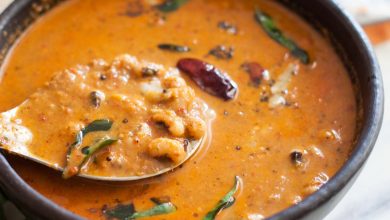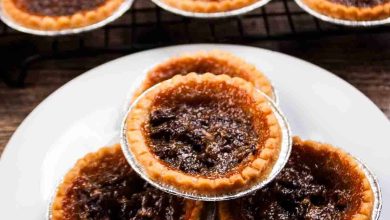Thengai Poornam Kozhukattai & Uppu Kozhukattai Recipe
A delightful and traditional Tamil treat, Thengai Poornam Kozhukattai and Uppu Kozhukattai are two varieties of the popular Kozhukattai, a steamed rice dumpling filled with either a sweet coconut-jaggery filling or a savory lentil filling. These delicious dumplings are a staple during festivals, especially during Ganesh Chaturthi, where they are offered to Lord Ganesha as a mark of respect and devotion. This recipe brings together the goodness of fresh coconut, jaggery, urad dal (lentils), and aromatic spices wrapped in a soft rice dough. Whether you’re celebrating a festival or simply craving a unique snack, this recipe is sure to please.
Ingredients:
| For Thengai Poornam (Sweet Coconut Filling): | For Uppu Kozhukattai (Savory Lentil Filling): |
|---|---|
| 1-1/2 cups Fresh coconut – grated | 1 cup White Urad Dal (Whole) |
| 1/2 cup Jaggery – powdered | 2 Green Chillies |
| 1/4 teaspoon Cardamom Powder (Elaichi) | 1 inch Ginger |
| 1/4 cup Water | 1/4 teaspoon Asafoetida (Hing) |
| Salt – to taste | |
| 1 teaspoon Sesame (Gingelly) Oil | |
| 1/2 teaspoon Mustard seeds | |
| For the Rice Wrapper (Dough): | |
| 2 cups Rice | |
| 3 cups Hot water | |
| 1 cup Milk – warm | |
| 1/4 teaspoon Salt | |
| 1 teaspoon Sesame (Gingelly) Oil |
Prep Time: 10 minutes
Cook Time: 90 minutes
Total Time: 100 minutes
Servings: 4
Cuisine: Tamil Nadu
Course: Dessert (Can also be served as a snack or tea-time treat)
Diet: Vegetarian
Instructions:
Method for the Coconut Jaggery Filling (Thengai Poorna Kozhukattai):
- In a heavy-bottomed saucepan, combine grated fresh coconut, powdered jaggery, cardamom powder, and water.
- Set the heat to high and cook while stirring constantly until the jaggery dissolves completely.
- Once the jaggery has dissolved, reduce the heat to medium and continue stirring.
- After about 7-10 minutes, you’ll notice that the mixture starts thickening, and the water begins to evaporate.
- Stir until all the water evaporates, and the coconut mixture becomes sticky and thick.
- Turn off the heat and transfer the mixture to a separate bowl to cool.
- Once the filling has cooled down, divide it into 10-15 equal portions. These portions will be used as the sweet filling for the rice wrapper.
Method for the Lentil Filling (Uppu Kozhukattai):
- Soak the urad dal in 2 cups of water for about 30 minutes.
- Drain the water and blend the soaked dal with green chilies, ginger, asafoetida, and salt into a coarse batter.
- Transfer the batter to steamer or idli plates and steam for about 10 minutes until fully cooked. To check, insert a knife into the center—if it comes out clean, the batter is done.
- Allow the steamed dal mixture to cool down. Once it’s partially cool, cut it into pieces and crumble it gently to remove any lumps.
- Heat sesame oil in a heavy-bottomed pan. Add mustard seeds and let them crackle.
- Stir in the crumbled steamed dal and sauté for a few minutes until well combined and the flavors meld together.
- Allow the lentil mixture to cool completely. Once cooled, divide it into 10-15 oval-shaped portions. These portions will serve as the savory filling for the rice wrapper.
Method to Make the Rice Wrapper (Dough for Kozhukattai):
- Soak the rice in 3 cups of hot water for about 30 minutes. Then blend the rice into a fine batter.
- Once the rice is blended, stir in the warm milk, sesame oil, and salt to create a smooth and thin batter.
- Pour the batter into a heavy-bottomed saucepan and heat over medium flame.
- Stir continuously to prevent lumps from forming. Keep stirring until the batter thickens and starts to leave the sides of the pan.
- The batter should form a dough-like consistency after 15-20 minutes of constant stirring.
- To check for doneness, hold the dough with your hands—if it doesn’t fall off, the dough is ready.
- Turn off the heat and transfer the dough to a separate container. Cover with a wet muslin cloth to keep it warm and soft.
Method for Assembling the Kozhukattai (Rice Dumplings):
- Smear a little sesame oil on your palms to prevent the dough from sticking. Knead the dough to remove any lumps, ensuring it remains soft and pliable.
- Keep the dough covered with a wet muslin cloth to prevent it from drying out.
- For Thengai Poornam (Sweet Filling):
Take a lemon-sized portion of the dough and roll it into a ball. Press it flat using your palms to form a round shape. Create a small depression in the center, then place a portion of the coconut-jaggery filling inside. Gently fold the edges of the dough to the center and form a pointed top, sealing the filling inside. - For Uppu Kozhukattai (Savory Filling):
Take a similar-sized portion of dough and flatten it into an oval shape. Place a portion of the lentil filling inside and bring the edges together, sealing the filling within the dough. - Ensure the dough is not too thin, as the filling could spill out when you attempt to wrap it.
- Keep smearing your palms with sesame oil as you work with the dough to prevent it from sticking.
Steaming the Kozhukattai:
- Prepare the steamer by filling it with water and bringing it to a boil.
- Arrange the filled dumplings on the steamer plate, ensuring they are not crowded to allow even steaming.
- Steam the dumplings for about 10 minutes. They will become shiny and smooth when done, and the rice wrapper will no longer be sticky.
- Once done, remove the steamed dumplings from the steamer and place them aside.
- Continue steaming the remaining dumplings in batches until all are cooked.
Serving Suggestions:
- Thengai Poornam Kozhukattai and Uppu Kozhukattai can be served as a festive offering during Ganesh Chaturthi or enjoyed as a delicious snack with tea.
- These dumplings can be refrigerated and stored for a few days. To reheat, simply steam them again or warm them in a microwave.
Additional Tips:
- Use fresh, tender coconut for the sweet filling to achieve the best texture and flavor.
- If you prefer a spicier version of the savory filling, feel free to add more green chilies or a dash of chili powder.
- Ensure that the rice dough is stirred constantly while cooking to avoid lumps, as this can result in a smoother and softer wrapper.
- Be careful not to overcook the coconut filling, as it should remain moist and sticky, not dry or hardened.
Enjoy the process of making these delectable Kozhukattai filled with sweetness and spice, and share them with friends and family during special occasions or as an everyday treat!




